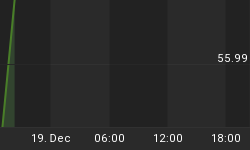Several weeks ago a reader wrote me to suggest that there is no predictability to the "Dumb Money" indicator. I think I understood what the reader was stating especially since the indicator has been stuck in a super bullish extreme (i.e, bear signal) for several months now while the equity markets have gone higher. I take the reader's question seriously, and feel that it is a worthwhile query that requires a thoughtful answer.
Before getting to my response on the "Dumb Money" indicator, let me talk about my approach to market analysis in general. First, I wouldn't present anything on this blog that isn't thoroughly researched. I really don't like "pump and dump", and I really believe that most analyst work is based upon anecdotal observation. The bar needs to be higher. Second, I try to stick to what I do best and that is measuring the significance of price movements. Third, I try to make my approach different than other technical analysts or quantitative strategists, and I am not different for the sake of being different. I like to think that I am putting out original research that works. Rarely do you see me write about MACD's or stochastics; my bread and butter is how price relates to past pivot points and trend lines formed by those pivot points. Divergences also form a large part of my work. Fourth, I try to quantify all my observations. How else do we know if something works if we don't quantify it?
Dictionary.com defines predictable as "to declare or tell in advance; prophesy". My personal bias is that no indicator or data point can predict the direction of prices 100% of the time. There is no holy grail.
Let's take the unemployment rate as an example. Who would have thought the stock market would have moved over 50% off the March, 2009 lows while unemployment approaches 10%. According to the missives from David Rosenberg, this has never, ever happened before. Never, ever!!!! So how predictive is a rising unemployment rate?
You get the point. Nothing works all the time. Nothing.
On the other hand, there are still many reasons to pay attention to investor sentiment. One, most investors don't beat the stock market, so let's develop a methodology that takes advantage of that fact. Two, the data actually bears this out. When the "Dumb Money" indicator is bearish (i.e., bull signal) prices accelerate at a very high annualized rate once the market "turns". In other words, we have a reason to be in the markets when the majority of investors are bearish. Three, the signals from the "Dumb Money" indicator are relatively efficient most of the time. By this I mean that the bullish and bearish signals work about 85% of the time with an acceptable draw down to one's capital. Four, the "Dumb Money" indicator corroborates other measures of investor sentiment such as insider buying and selling. Company insiders are usually buying when the "Dumb Money" is bearish.
In the end, I believe the use of investor sentiment is a unique tool to help navigate the markets. It should serve as just one (very good) facet to help illuminate the many aspects of the market beast.
But let's take the reader's inquiry a little bit deeper because I got to thinking if the "Dumb Money" indicator is really, truly unique. In other words, is the "Dumb Money" indicator just a glorified momentum oscillator that mimics the movement of other more popular indicators such as RSI or stochastics? For example, as prices head lower you would expect investors to become more bearish and your momentum oscillator to drop as well. Or how is the current, uber - extreme bullish reading in investor sentiment different than the oscillator that got overbought and just stayed there as prices headed higher?
As it turns out and as we can see in figure 1, prices tend to bottom at various values of RSI whereas they generally bottom (about 85% of time) when the "Dumb Money" is bearish for two consecutive weeks. In this weekly graph of the S&P500, I am comparing a standard 14 period RSI indicator (in black) with the "Dumb Money" indicator. Based upon the RSI, it is really difficult to determine when prices are truly oversold and ready to bounce back.
Figure 1. "Dumb Money" Indicator v. RSI/ weekly
Furthermore, while I expect a bounce when the "Dumb Money" indicator becomes bearish (i.e., bull signal), it is the price failures that probably have greater predictive value. In other words, if a sustainable, tradeable bounce fails to develop while investors are bearish it has portended a significant disconnect in the markets. 1998, 2002, and 2008 are good examples of this.
My goal in writing this article is not to defend my research or the use of the "Dumb Money" indicator. My goal is to demonstrate the seriousness of thought that I have put into analysis and the correct presentation of my work. If I say it is unique, I want it to be unique. And I want to show you why that is so. To me, the data suggests that investor sentiment analysis is a worthwhile pursuit - warts and all!!
















